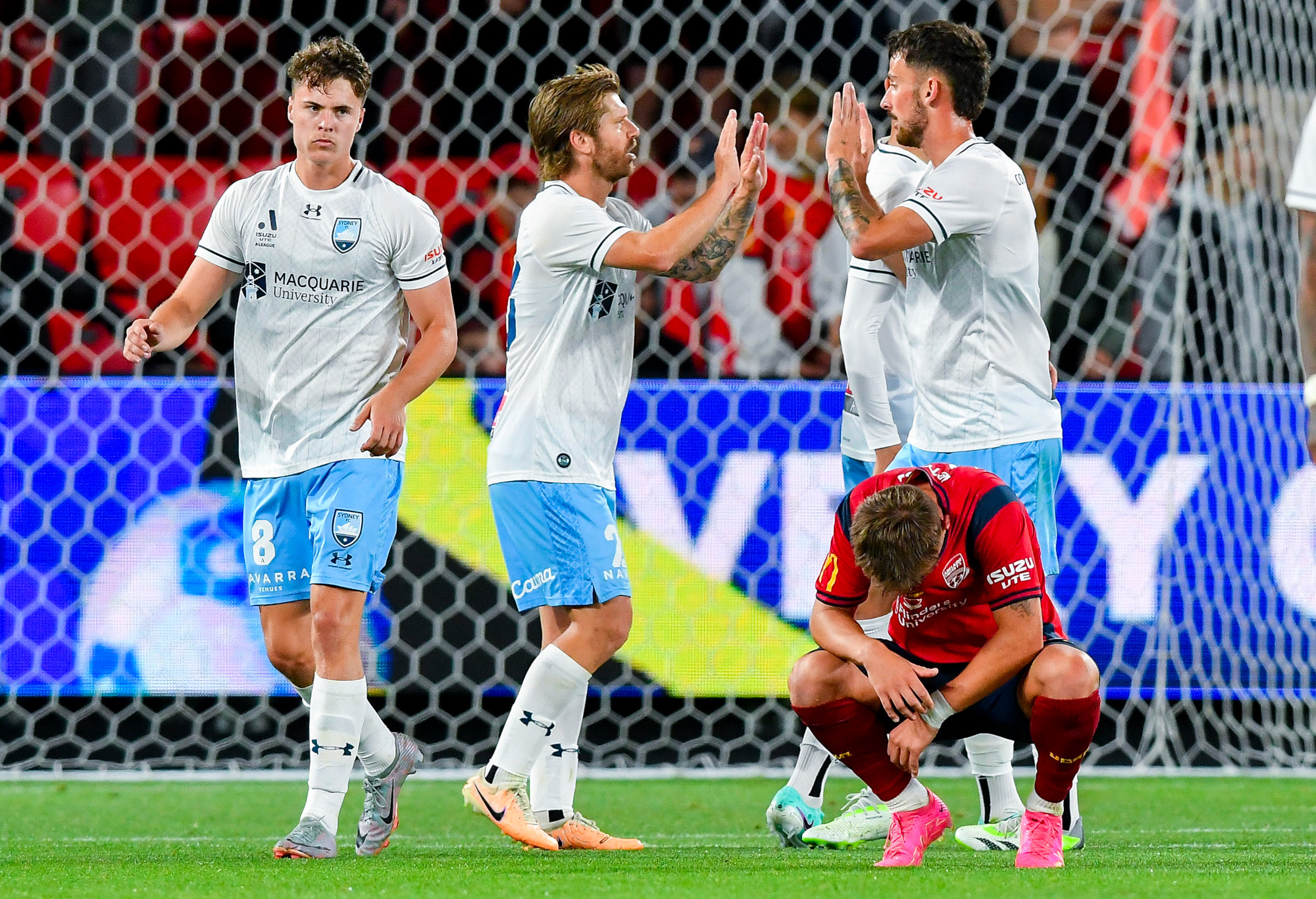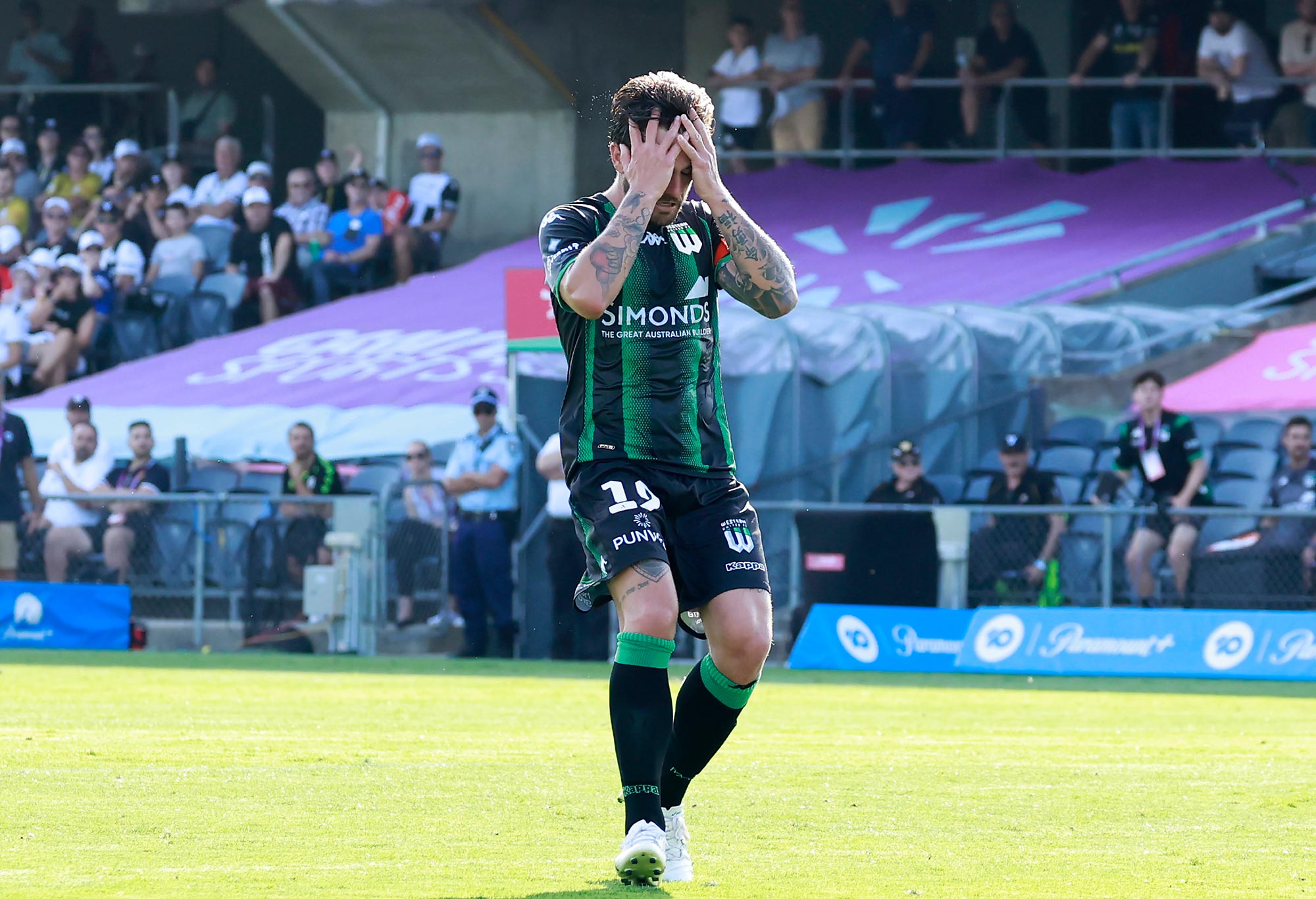WATCH: Mary Fowler nets an absolute screamer as Man City thrash Bristol
The Matilda scored the first two of her team's goals in the 4-0 win.
The J-League have recently announced that they will shift their season from Summer to winter, starting from August 2026.
Currently the J-League season runs from late February to December, with a 2 week break in the middle of the Japanese summer.
The J-League’s winter season will run from mid-August until the final weeks of May, with a mid-season winter break between mid-December to mid-February.
The reasons for the J-League shift from summer to winter is the J-League want to align the league with the Asian Champions League (ACL), the European transfer market as well as reducing the number of games played in the extreme heat of the Japanese Summer.

Fans of Shimizu S-Pulse are typical of Japan’s passionate football support. (Photo by Hiroki Watanabe/Getty Images)
J-League chairman Yoshikazu Nonomura explained the thinking:
“J-League players’ performances really drops over the summer, and we needed to do something about it.” The chairman said. “Over the course of these deliberations all of us have ended up on similar footing.”
“We’ve focused on playing over the summer, but in the last 30 years, I feel as though we haven’t made enough progress in creating environments that will allow for playing sports during the winter.”
Winter in Japan also presents other problems, as mountainous regions such as Niigata, Yamagata, Hokkaido, Sendai and the Tohoku region experience very harsh winters with heavy snowfalls, which may force these clubs to play consecutive away games during late winter to early spring.
Nonomura has said that they will put money aside to compensate the clubs in those regions to improve the facilities such as heating and roofs at the ground, and has also said he wants to see more investments made in these stadiums to make them more compatible for not only soccer, but other sports like rugby and baseball so these sports can comfortably play in those stadiums year round.
“League working have put aside ¥10 billion (around $100m) to support cold-weather clubs in the transition. This isn’t just a soccer issue, we need to look at it from a broader sports perspective, what facilities need to be built, etc” said Nonomura.
Shifting the J-League season from summer to winter did face opposition from stakeholders. Nonomura said the league have talked to around 500 people during the process, to determine the best way forward for Japanese soccer.

Ange Postecoglou won the J-League J1 Trophy with Yokohama F.Marinos. (Photo by Etsuo Hara/Getty Images)
“When you make big changes, there will never be 100% in favour,” says Nonomura. “It’s because we have those dissenting opinions that we can come up with new ideas and reach better solutions. But even if they disagree, they also want to improve Japanese soccer.”
“I feel like we didn’t do enough to share details about deliberations with local media (in snowy regions). I started going there to meet with local media and I will continue to do so. What the clubs have shared with their supporters is also important.”
“Fixing the valley (in performance) that we’re seeing is one of the most important issues we face, and in order to do that we have to stop playing in June and July.”
The big question is how will the J-League transition from playing in summer to winter. Nonomura said it’s still a work in progress, but explained the entire process.
“Entire board approved change. Understanding that transition won’t be smooth sailing and that there are various issues that need to be resolved. Half year earlier we might have been more divided. Now some have changed their mind, agreed to move forward & tackle issues.”

Sydney FC players celebrate an unexpected win over Adelaide United. (Photo by Mark Brake/Getty Images)
“The ’24 and ’25 seasons will be normal. We’re still considering what to do about the 0.5 season in 2026. We need to think about how to preserve club and league revenues during that period, and satisfy fans.”
With the J-League being one of the best leagues in Asia, the chairman wants to go one step further by making it one of the most competitive leagues in the world.
The J-League have set out metrics for the next decade both the league and the clubs should achieve, targeting:
– 2 ACL wins every 4 years, with 2 J-League clubs qualifying for the new Club World Cup.
– 3 Clubs in the ACL quarter finals
– Quarter finals or better at the Club World Cup
– Top clubs to be earning at least ¥20 billion (around $200m AUD) annually.
– J-League clubs to increase their earnings by 50-100%.
The J-League are also targeting to double the amount of players playing in the J-League to be in the Japanese National team, aiming for 30% from its current level of 15%.
So with the J-League looking to shift their seasons and putting these targets and objectives for the J-League clubs, what does this mean for the A-Leagues?
The APL’s League operations team should be monitoring this very closely, as there have been calls to shift the A-League season to winter due to summers in Australia getting hotter, and having 3pm kick offs in the middle of summer not only affects the performances of the players, but also the health and wellbeing of the players and fans as well. Also worth consideration is the aligning of the A-League season with the NPL and the new National Second Division.
As Nonomura explained, the impact of climate change and the number of games postponed by heavy rains, other inclement weather and the potential for more weather events in the future.
If the shift to winter is not possible for the A-League, then changes need to be made – potentially starting the season a lot earlier, perhaps in mid-August with a 4-week midsummer break around the Christmas/New Year period.
But winter in Australia also presents its own problems – and it’s not related to climate. Winter in Australia isn’t as harsh as Japan’s, but ground availability is the problem. The NRL, AFL and Rugby Union seasons are played in winter, and these codes will have preferential treatment over the A-League when it comes to booking the stadiums.

Josh Risdon of Western United. (Photo by Mark Evans/Getty Images)
A lack of infrastructure has also hurt A-League clubs, as governments prefer a multi-purpose stadium over having a stadium catered to only 1 sport. They can’t see the justification of spending millions of dollars to building a single purpose stadium.
The APL have said competing with the NRL and AFL will dilute their attendances and interest in the league. This hasn’t been proved, as the A-Leagues’ season overlaps the NRL and AFL seasons between February and May and we have seen A-Leagues crowds increase during the NRL and AFL seasons as we move into the cooler months of the year.
While the J-League are putting in performance targets for its clubs to achieve both on and off the field, no such targets or ambitions have been put on to the A-League. At the moment, both the league and the clubs are focused on fighting for survival and are relying on commercial revenues to keep everyone afloat.
The APL needs to set targets for A-League clubs to ensure they are not only sustainable but also to build on success, ensuring cash keeps flowing in to the clubs so they aren’t reliant on hand outs.
I am not simply asking the APL to carbon copy everything the J-League are doing to be successful, but maybe start emulating them to ensure the future and success of not just the A-League but also Australian football.
As Nonomura said, not everyone will agree with the decisions the J-League make, but they will go with it because they think it will benefit Japanese Soccer in the future.